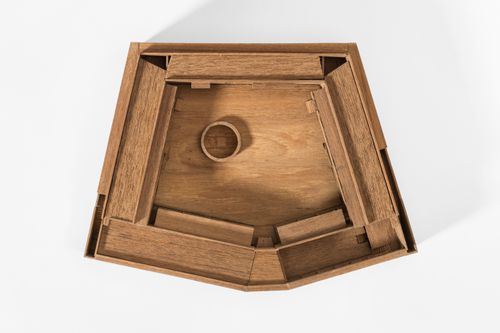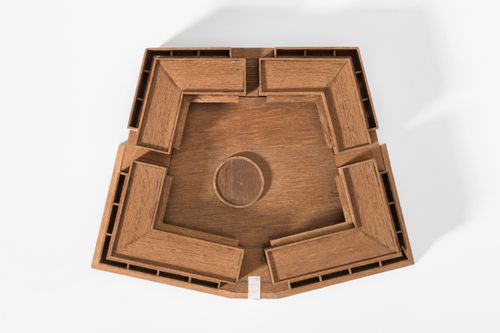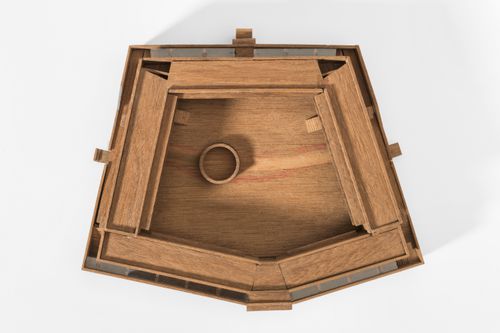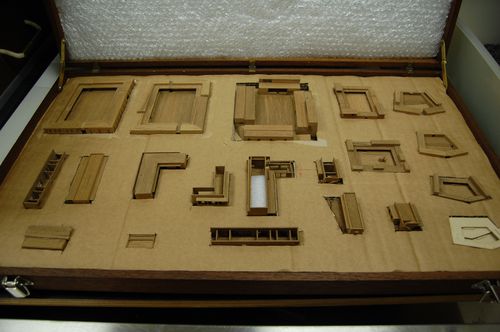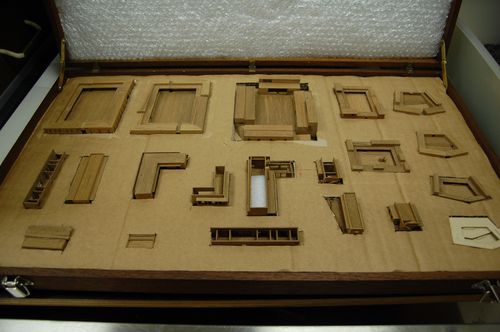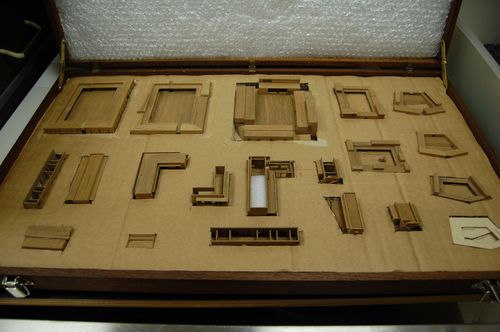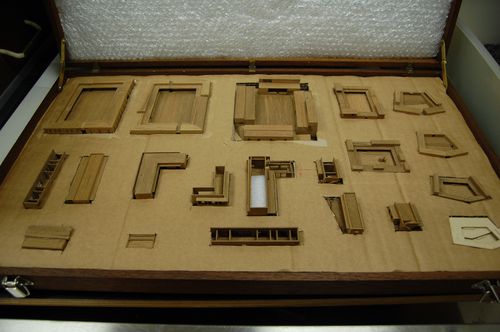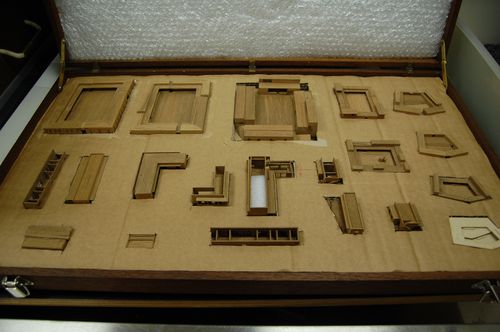Project
Weavers' Studio
AP182.S1.2013.D2
Description:
File documents a project for a live-work complex in Dehradun, Uttarakhand, India. Commissioned by Chiaki Maki, a Japanese textile weaver who spends a portion of each year in northern India, this complex in the Himalayan foothills provides working space for a studio of twenty-five weavers from all over the country. It is conceived as a cyclical, self-sufficient farm system that integrates all aspects of the weaving process, from cultivating indigo and henna for dye to gathering silk from cocoons and spinning wool. The site had been previously cultivated, and the design works with the landscape's existing pathways, terraces, and mango groves. Nearly all construction materials--including the brick, limestone, and phosphorescent river stones used in the foundation and to treat the brick walls--come from within a two-kilometre radius of the studio. The five-sided building occupying the centre of the site is the workshop itself, which frames a courtyard for gatherings (of weavers, children, etc.). A gallery in the complex displays the weavers' work, while the linear buildings accommodate motorcycle parking, a guest house, and residences for Maki and her partner as well as the site caretaker and his family. File contains artefacts and realia, models, photographs, drawings, site reports, and a video recording.
2012-2015
Weavers' Studio
Actions:
AP182.S1.2013.D2
Description:
File documents a project for a live-work complex in Dehradun, Uttarakhand, India. Commissioned by Chiaki Maki, a Japanese textile weaver who spends a portion of each year in northern India, this complex in the Himalayan foothills provides working space for a studio of twenty-five weavers from all over the country. It is conceived as a cyclical, self-sufficient farm system that integrates all aspects of the weaving process, from cultivating indigo and henna for dye to gathering silk from cocoons and spinning wool. The site had been previously cultivated, and the design works with the landscape's existing pathways, terraces, and mango groves. Nearly all construction materials--including the brick, limestone, and phosphorescent river stones used in the foundation and to treat the brick walls--come from within a two-kilometre radius of the studio. The five-sided building occupying the centre of the site is the workshop itself, which frames a courtyard for gatherings (of weavers, children, etc.). A gallery in the complex displays the weavers' work, while the linear buildings accommodate motorcycle parking, a guest house, and residences for Maki and her partner as well as the site caretaker and his family. File contains artefacts and realia, models, photographs, drawings, site reports, and a video recording.
Project
2012-2015
archives
Level of archival description:
Fonds
Umberto Riva fonds
AP180
Synopsis:
The Umberto Riva fonds documents Riva’s work as an architect and designer, predominantly in Italy, between the 1960s to the early 2010s. Included are drawings related to over 80 architectural projects, furniture designs, and exhibition designs.
1959-2012
Umberto Riva fonds
Actions:
AP180
Synopsis:
The Umberto Riva fonds documents Riva’s work as an architect and designer, predominantly in Italy, between the 1960s to the early 2010s. Included are drawings related to over 80 architectural projects, furniture designs, and exhibition designs.
archives
Level of archival description:
Fonds
1959-2012
ARCH272112
2013
ARCH272113
2013
ARCH272114
2013
ARCH272786
2013
ARCH272787
2013
ARCH272788
2013
ARCH272789
2013
ARCH272790
2013
